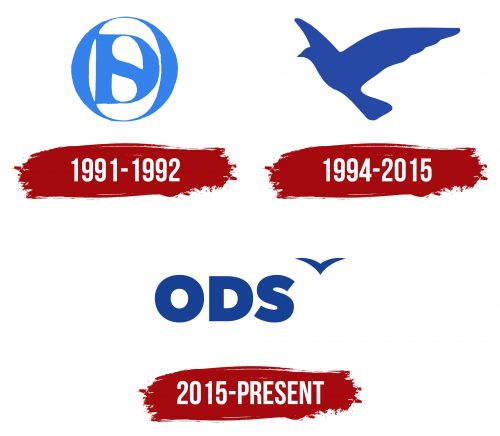 Obcanska demokraticka strana Logo PNG
Obcanska demokraticka strana Logo PNG
The Občanská demokratická strana logo brings the space a sense of strength, calm, and grandeur. The emblem portrays a party with great ambitions and timeless ideals.
Obcanska demokraticka strana: Brand overview
The Civic Democratic Party (Občanská demokratická strana, or ODS) began its journey on April 20, 1991, during the aftermath of the Velvet Revolution of 1989, which brought an end to communist rule in Czechoslovakia. Václav Klaus, then serving as the Minister of Finance, founded the party, emerging as the right-wing faction of the Civic Forum. This broad anti-communist movement guided the nation towards democracy. The organization championed rapid transition to a market economy, privatization of state-owned enterprises, and integration into Western frameworks.
In the 1992 elections for the Czech National Council, the group captured 29.7% of the vote, leading to Václav Klaus becoming the Prime Minister of the Czech Republic within Czechoslovakia. After the peaceful dissolution of Czechoslovakia on January 1, 1993, Klaus continued as the Prime Minister of the newly independent Czech Republic.
Under Klaus’s leadership, the organization rolled out an extensive economic reform program. This included a voucher privatization scheme, enabling citizens to acquire shares in state enterprises. This policy aimed to establish a class of private owners and transition swiftly to a market economy.
In the 1996 parliamentary elections, the group emerged victorious again, albeit with a reduced margin. Klaus formed a minority coalition government. By 1997, the government faced economic challenges and a political scandal involving party financing, leading to Klaus’s resignation as Prime Minister.
The group secured second place in the 1998 snap elections behind the Czech Social Democratic Party (ČSSD). Despite being in opposition, it entered into an “opposition agreement” with ČSSD, facilitating the formation of a minority government by the Social Democrats.
Václav Klaus stepped down as chairman in 2002, with Mirek Topolánek succeeding him. That year, the organization came in second in the elections and remained in opposition.
2006 the party triumphed in the parliamentary elections, and Mirek Topolánek became Prime Minister. However, his government faced challenges with parliamentary support and was ousted by a vote of no confidence in 2009.
Petr Nečas assumed party leadership in 2010. That year, the group placed second in the elections but formed a coalition government with Nečas as Prime Minister. His administration encountered a corruption scandal, leading to its fall in 2013.
Following Nečas’s resignation, Petr Fiala took over as leader, steering the organization through a period of opposition and gradual recovery in voter support. In the 2017 elections, the group improved its standings significantly, coming in second place and reinforcing its role as a leading center-right political force.
In 2021, the organization won the parliamentary elections as part of the SPOLU coalition (with TOP 09 and KDU-ČSL). Petr Fiala became the Prime Minister of the Czech Republic, forming a coalition government.
Meaning and History
What is Občanská demokratická strana?
It is one of the leading political parties in the Czech Republic. The party adheres to conservative and liberal-economic policies. It advocates for a free market, tax reduction, protection of private property, and the maintenance of traditional values. It was founded by politicians and intellectuals aiming to reform the country’s political system. The party’s key figures have significantly contributed to its development and success in elections. The party actively participates in parliamentary and local elections and has a major influence on the political life of the Czech Republic.
1991 – 1992
The movement’s emblem consists of a monogram interwoven with the first letters of the party’s name, ODS. The circular base formed by the letter O emphasizes harmony and communicability.
The letter S within the D creates a design with two white drops on a blue background. This image suggests that Občanská demokratická strana is one of the two successors of the Civic Forum movement and initially existed in coalition with it.
The symbol reflects the new political force’s fresh stance, commitment to free trade, and desire to distinguish itself from other party movements.
1994 – 2015
The bluebird, spreading its wings, filled the new logo with hope. The dove of peace and freedom, representing the party’s political values, attracts with its simplicity and grace. The symbol embodies the Czech Republic’s independence. It showcases the party’s election victories and defines the direction of the Czech Republic over the past decades. Blue alludes to the country’s flag.
2015 – today
When this logo was created, the party was celebrating the re-election of its chairman and electoral successes. 2015 marked the beginning of ODS’s return to influence on the political scene. The logo highlighted the party’s renewed strength and influence, confidence in long-term success, and readiness for new victories.
The new party logo features the abbreviation ODS in large blue letters, symbolizing resilience and strength. To the right of the abbreviation is an image of a bird in flight, emphasizing the party’s broad horizons and confident outlook for the future.
The emblem symbolizes the reliability and stability that the party has maintained over the years, being one of the two strongest political forces in the country. The bird in flight represents the aspiration for long-term prosperity and dominance.
The abbreviation ODS is rendered in a bold and strict font, giving the logo an impressive and confident appearance. The smooth lines of the bird’s image create a sense of movement and freedom.
The primary color of the emblem is blue. This color is associated with reliability, stability, and confidence, aligning with the party’s principles and goals.






